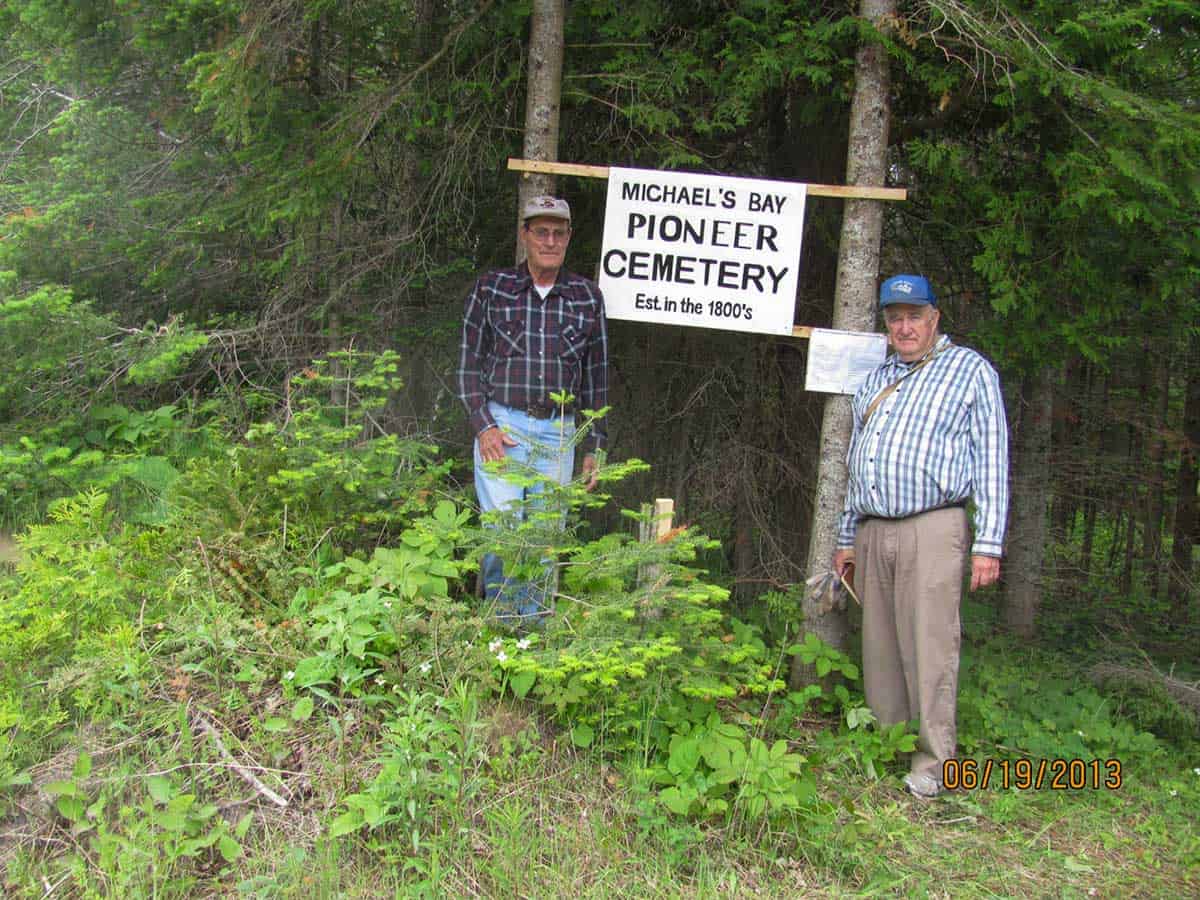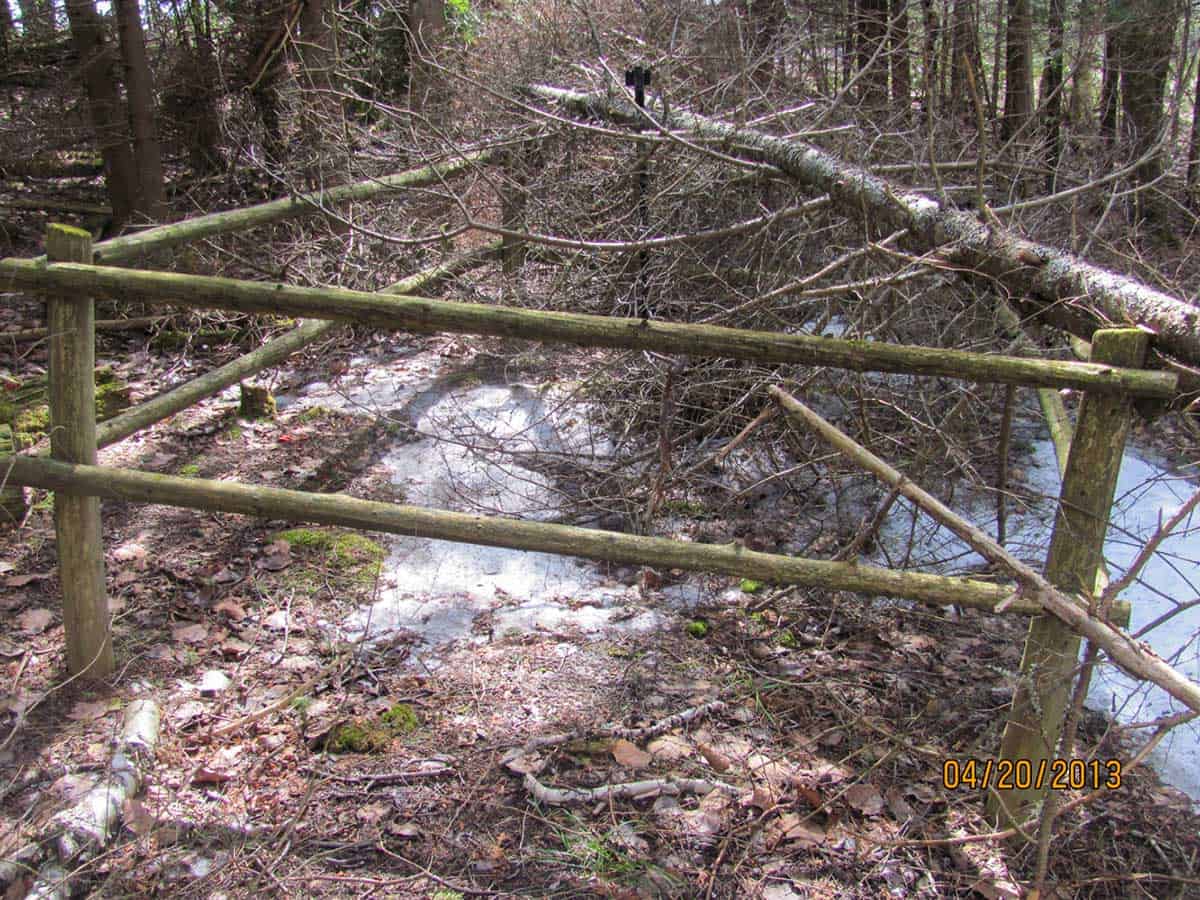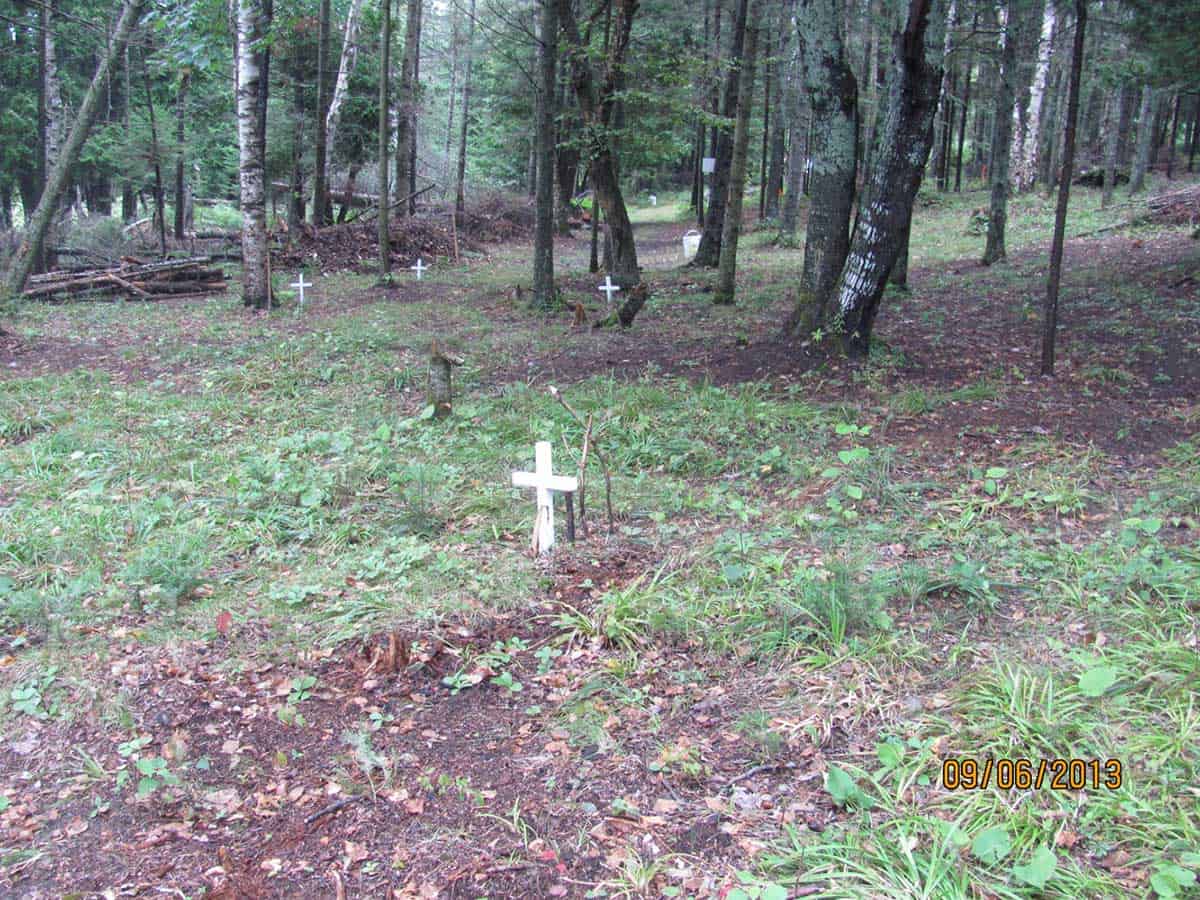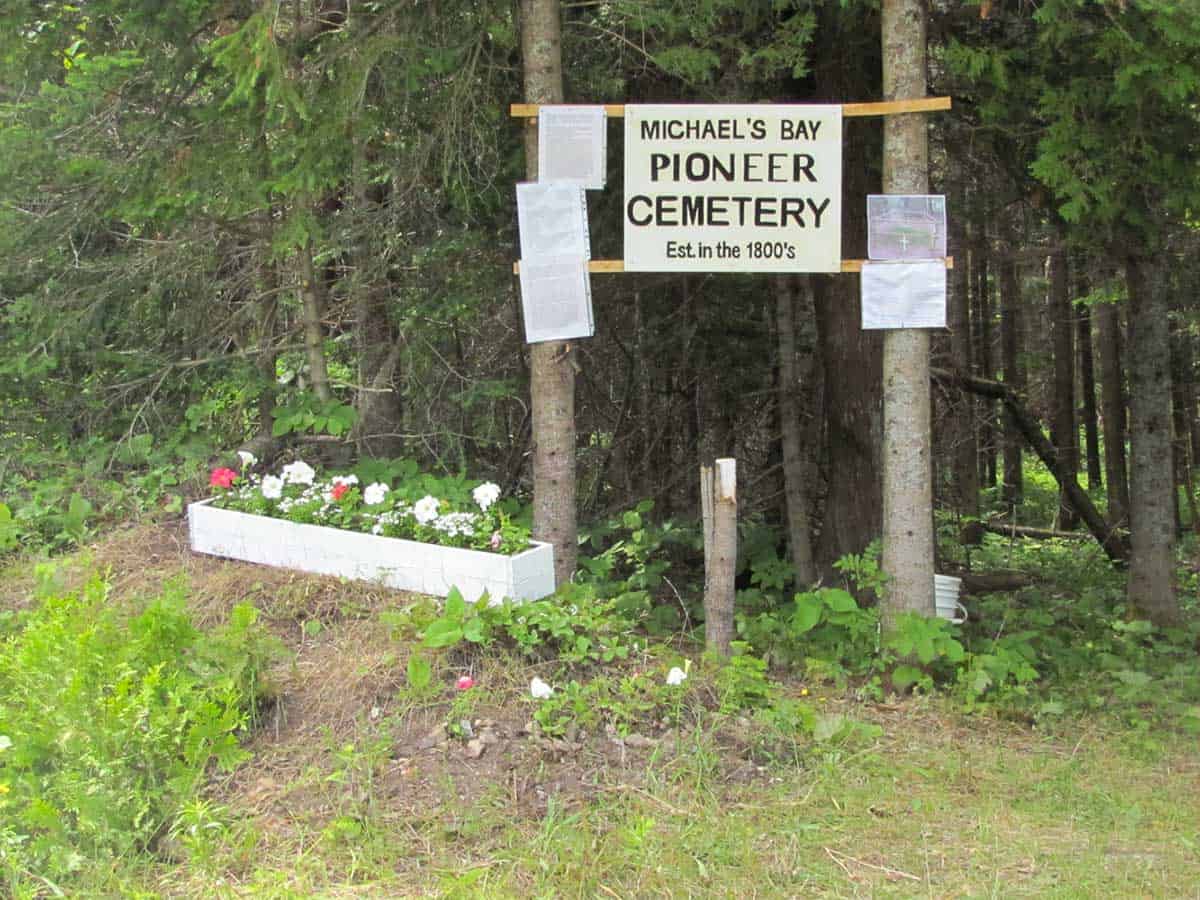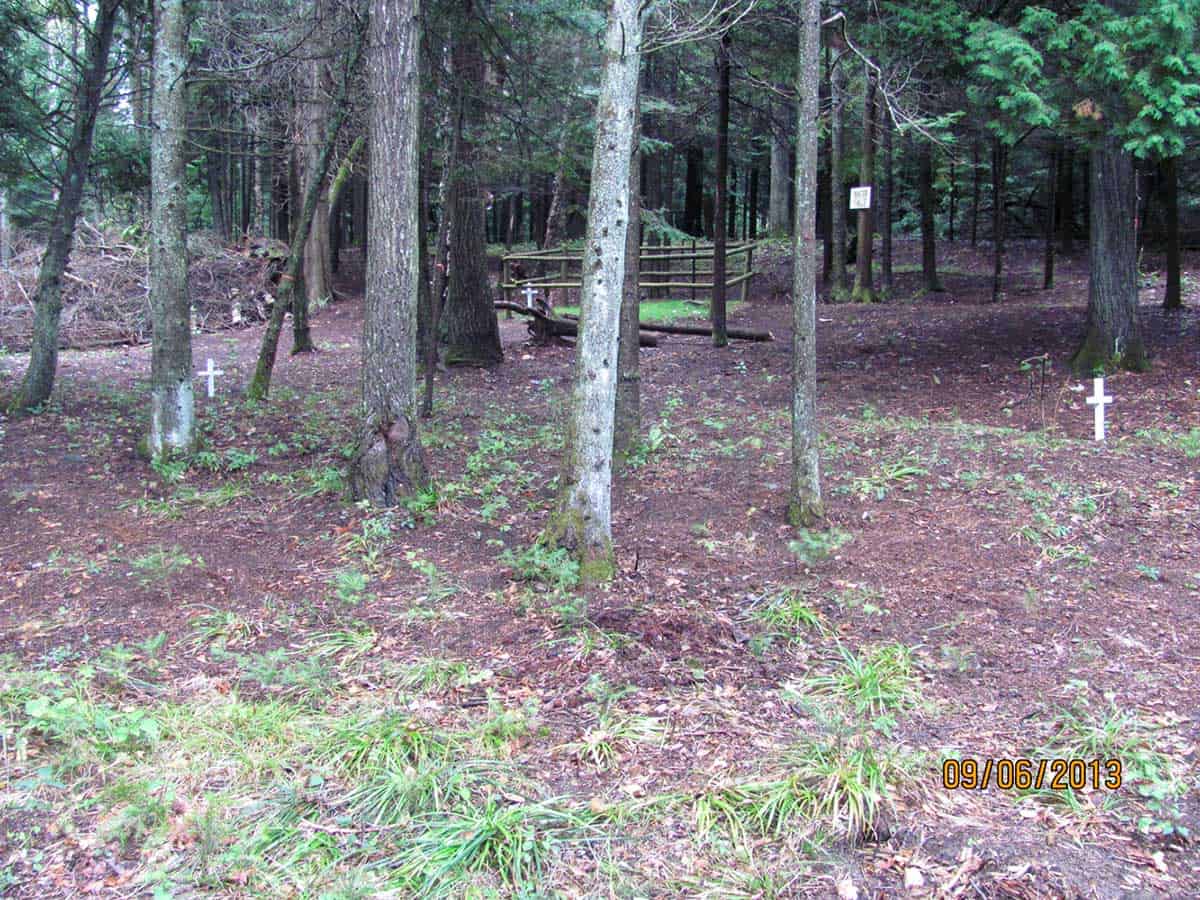Manitoulin’s first large community, now a ghost town, provided first jobs for many pioneer Island families
MICHAEL’S BAY – A major portion of the Michael’s Bay saga came to a close last week when Michael’s Bay Historical Society (MBHS) reached a deal with the federal government to purchase the former plot of the town, including burial sites within the area, the culmination of more than two decades of steady work by advocates seeking to preserve the history of the area.
“This was a big step forward,” said MBHS president Ed Sagle. “Everybody is quite excited.”
On April 21, MBHS formally closed the deal with the federal government, through Public Services and Procurement Canada.
The land is approximately 49 acres and surveyor Gord Keatley is doing the final work on the property boundaries.
“It’s about 90 percent of what we asked for, because there was a little section on the west side we didn’t get that’s hooked into a bigger parcel of land. We got what we needed exactly, which is good,” Mr. Sagle said.
When Tehkummah clerk-administrator Silvio Berti heard that MBHS had secured the land, his first reaction was simply “wow.”
“Tehkummah council has always been in favour of (MBHS buying the land) and has supported it. That will be good news for the council and the township,” he said.
Part of the township’s interest in the lands stems from the burial sites present within the property; Tehkummah is required to maintain such registered sites and getting access to them is expected to be an easier task with the historical society’s ownership.
“The Government of Canada is pleased to have reached an agreement with the Michael’s Bay Historical Society for the sale of the former Michael’s Bay townsite on Manitoulin Island,” said PSPC spokesperson Michèle LaRose.
From boom to bust
Before the settler town roared to life in the mid-1800s, the area around Michael’s Bay and the Manitou River was a thriving Odawa settlement dating to the 1600s.
The town sprang up at the same location after treaties pushed First Nations to reserves and Manitoulin Island opened up for settlement. Michael’s Bay reached its peak in the late 1800s and early 1900s and was reportedly the largest settler town on the Island, featuring two busy mills, including one that operated 24 hours per day for some time.
The mills processed logs from the townships of Tehkummah, Sandfield, Carnarvon and Assiginack, many of which they drove down the river to reach the mill. MBHS said it hoped to one day reconstruct the main mill, whose sluice is still visible around the waterfall at Michael’s Bay.
The town featured homes and all the amenities of a settlement including stores, a post office, hotel, school and blacksmith shop.
“Between 1866 and 1900 there was a lot of people in and out of there; a lot of Manitoulin roots went through there,” Mr. Sagle said.
It’s hard to imagine the scale of the town from its present-day state.
A handful of holes in the land from partially filled-in foundations are the only indications that buildings once stood in the townsite. The old mill sluice quietly meanders through a forest near the waterfall. The structures in Michael’s Bay were largely board-and-batten buildings that burned in a large fire in 1914.
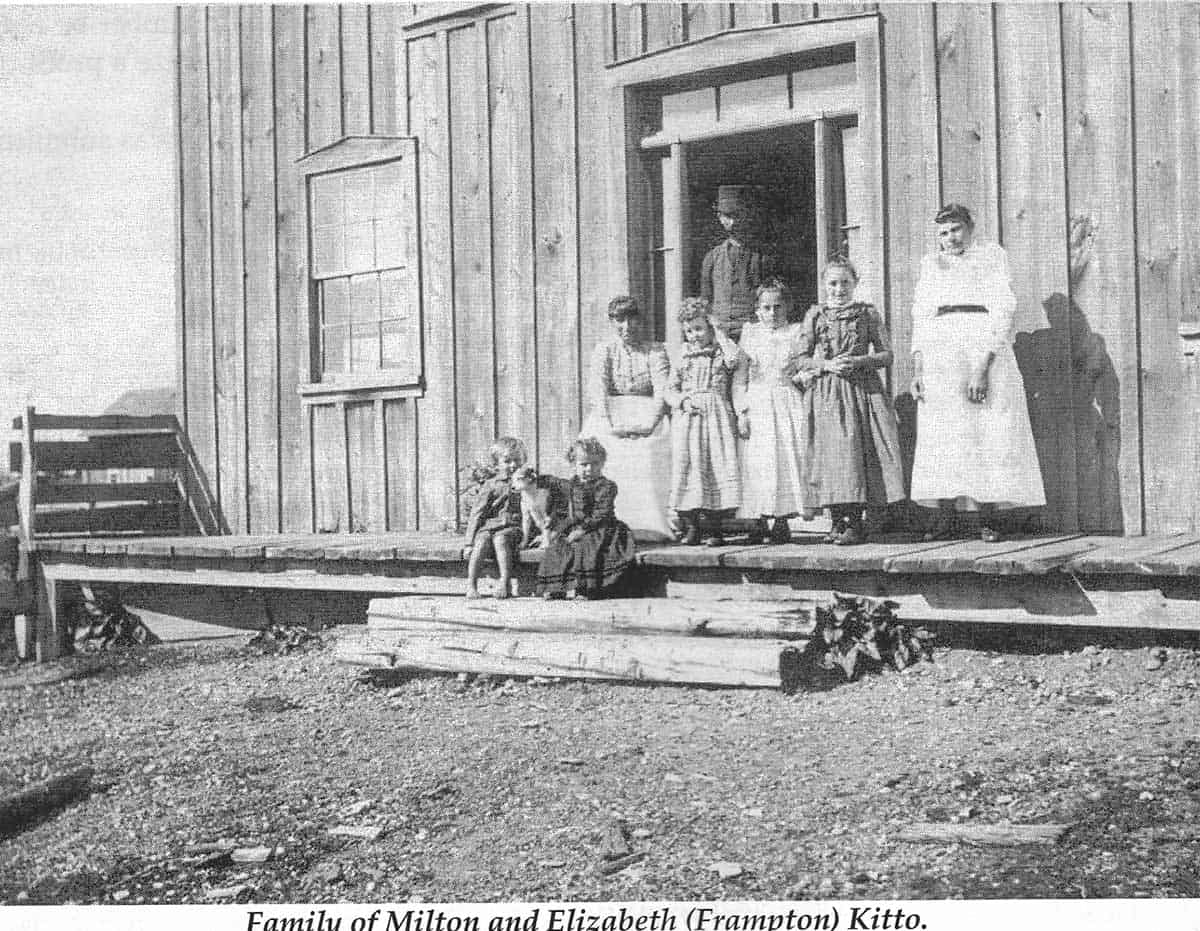
A complicated century
Time has not been kind to the former town. After it burned and faded into obscurity just over 100 years ago, despite one effort in the 1960s to preserve some of the history, some people pillaged the land of the historic site to extract gravel below the soil, including a quarry that comprises part of the site and gravel extraction from the bed of the Manitou River.
The property has had various owners over the years who ultimately purchased large swaths of nearby land into a single parcel, several hundred acres in size.
The state of the former town abruptly changed in 2005, when the Government of Canada seized the property on behalf of the Belgian government.
Belgium was investigating citizens Claire and Walter Vandroemme for selling bovine growth hormone in that country (that steroid is illegal in the European Union and Canada) and purchasing these lands with the money from those sales.
The seized Michael’s Bay lands consisted of a few different portions, including the former Royal Michael’s Bay Resort property that an Island man bought last summer. Canada has severed off the lands into different parts and began to dispose of some of them last year.
PSPC consulted with the Township of Tehkummah and First Nations in the area, notably Wiikwemkoong, which withdrew its interest last year. It said the historical group made an ideal candidate for taking over the ownership of this storied property.
“The alignment between the mandate of (MBHS), coupled with its knowledge of historic features of the site, such as burial grounds and the old mill site, makes (MBHS) an ideal steward of this important piece of local heritage. We look forward to progress by (MBHS) in carrying out its plan to preserve the site and use it for public benefit,” stated Ms. LaRose.
The government arrived at a purchase price of $5,400 plus HST, which it negotiated with MBHS based on the public’s interest and the “heritage, protection of the site and intended use” of the property.
While this may seem to be a lower price than similar properties, in addition to the consideration of the public’s interest, the land also contains burial sites which greatly complicate any land use.
PSPC has not placed any restrictions on the sale that would stipulate a specific usage for the site, though it said it came to the agreement based on MBHS’ commitment to honouring the area’s heritage.
Historical Society can advance plans
Mr. Sagle said MBHS, which re-formed in 2000 with the long-term objective of acquiring the property, has been focused on the purchase as its main priority. After that achievement, they can now focus on goals including refurbishing the old burial sites and laying out the locations of the old streets to help facilitate walking tours of the area.
“There’s a lot of work to be done; it’s just a matter of having the volunteers to help and the money we’ll need. We haven’t fundraised for a bit,” Mr. Sagle said.
In 2000, he recalled, the Ontario government was looking to purchase the property to expand Blue Jay Creek Provincial Park. The historical society formed partly to preserve and promote the ghost town’s history as much as possible.
“We couldn’t do a lot of things like apply for grants and stuff to do things until we owned the property. Now that we have that, we will have a virtual meeting to get everybody’s ideas and see where we’re going, but it’s looking pretty good,” he said.
One of the longer-term plans MBHS has for the property is establishing a hiking trail to run between John Budd Park in South Baymouth along municipal road allowances into the provincial park, and then out to the townsite in Michael’s Bay.
It also hopes to explore the idea of recreating the historic buildings, potentially including a functional, water-powered sawmill similar to the one in place at Upper Canada Village.
Members of the historical society said they were excited to use some of the modern technologies that have enhanced archaeological work, such as virtual aerial overlays and ground-penetrating radar to confirm burial sites. There are five known sites in the area.
Attempted preservation in 1960s
The news of the purchase was a delight to Manitowaning centenarian Jean McLennan, now 102. She is the only surviving member of an effort in the 1960s to revitalize the history of Michael’s Bay, which included a group of people from Manitowaning and Tehkummah studying the area and marking out the former layout of the town.
“I’ve been working on that for more than 60 years,” she told The Expositor. “I was so glad that Ed Sagle followed this through and was able to get us the property in our name.”
Ms. McLennan got involved when the historical society in Manitowaning amalgamated with MBHS. They worked to try to mark out the former townsite.
Part of the trek into Michael’s Bay at that time involved a walk, as the muddy track would often seize up the trucks and wagons that tried to get through.
Historical Society members recall stories from that effort to be the first ones to plot the ghost town’s layout, including putting up signs of where the former buildings once stood.
“They plotted according to memory, the old maps they had and only after the physical work of clearing the land of trees, brush and so-on,” said Jane Tilston, the current treasurer of MBHS whose ancestry had ties to the ghost town—her grandfather was the second non-Indigenous baby born in the area.
Her parents were part of that effort in the 1960s, which ultimately led to nearly the whole townsite getting laid out and marked.
Unfortunately, a group of “hippies” squatted in the area for a summer after all that work and they took as much burnable material as they could find, which included most of the wooden stakes and markers left to commemorate the town.
“We went out there a week later; the stakes were all pulled out and none of the metal plaques were on them or nothing, because they had burned them all up. I was so disgusted over that,” Ms. McLennan said. “Those hippies, you know what they were like.”
The plot was back to obscurity.
Later, Michael’s Bay was coming up for sale once more and the historians took a gamble by placing a $60,000 bid, even though they did not have the money at the time.
“I told (Jean Dixon, curator of the Assiginack Museum), ‘you know what, I’ll have to be going up and down the street with a little cup to get the donations!’ She started to laugh but I said to her, if she wanted to put in a bid at $60 (thousand), I guess I’d be a good gambler,” Ms. McLennan recalled.
They ultimately lost out to another group of people who had bid $100,000.
“That poor town was so bountiful and then grew so lonely,” Ms. Tilston said. “Years went by. We still had maps and we still had memories, but we lost some of the people along the way, but then came 2000 when a group of people thought, ‘let’s do something more serious,’ and we formed (MBHS).”
Ms. Tilston said it was sad to reflect on those who have worked toward this effort who are no longer alive to see the outcome, but said it was a proud legacy that the town will be preserved “for the rest of history.”
One of those tireless advocates was the late Doug Tracy, who spent many years working on the efforts to preserve the area, especially its burial sites. He was a vocal critic of plans to develop the Michael’s Bay area into a resort complex, plans that ultimately faded away.
Ms. Tilston joined the chorus of voices who credited Mr. Sagle for being the main driver behind the efforts to buy Michael’s Bay, despite decades of frustration and failed attempts. He began as the treasurer of MBHS in 2000 before moving into the president’s role.
Echoes in the present
The preservation of a key part of Manitoulin’s history, said Ms. Tilston, has deeper significance.
“It’s not a bad thing for each generation to realize that people sacrificed in the past, worked hard, produced and then had their life’s disappointments. You sort of touch on the past to build values for the future,” she said.
A small piece of Michael’s Bay’s history has remained in the town of Manitowaning after so many years. Michael’s Bay Road, a small street that follows a ridge on the west end of the town, is on the original route between Manitowaning and Michael’s Bay (before Ontario built Highway 68, later Highway 6) that helped tie residents of Assiginack and Tehkummah together for generations.
The road that leads down from the heart of Tehkummah to the cottages at present-day Michael’s Bay carries the same name.
With this sale, plus the land sales from last summer, much of the Michael’s Bay property is now out of the government’s hands. Canada, however, still owns roughly 500 acres of land in the area. A spokesperson said PSPC will list it for sale through a realtor in the coming months.


